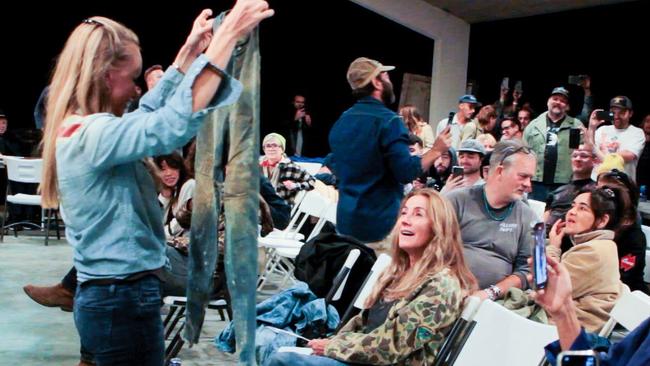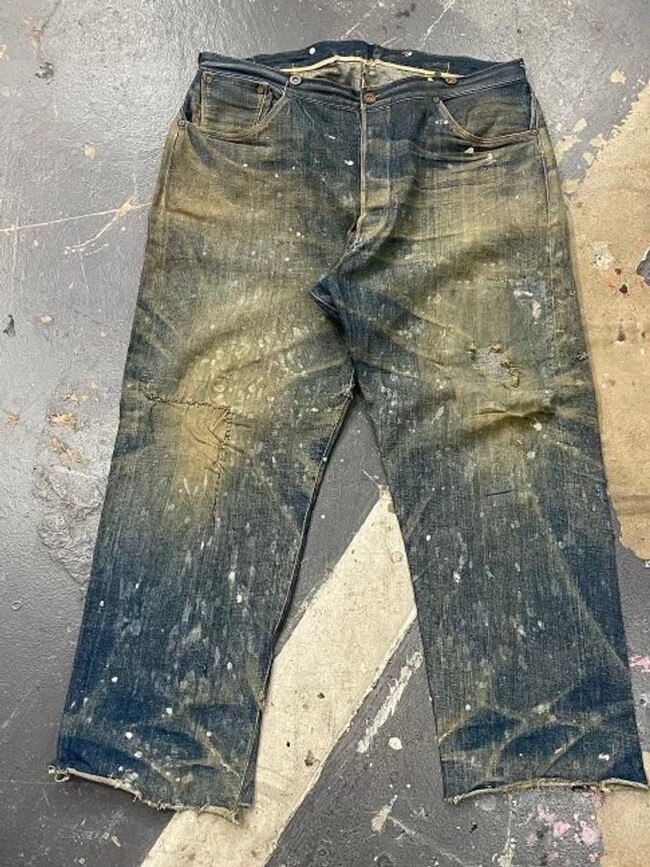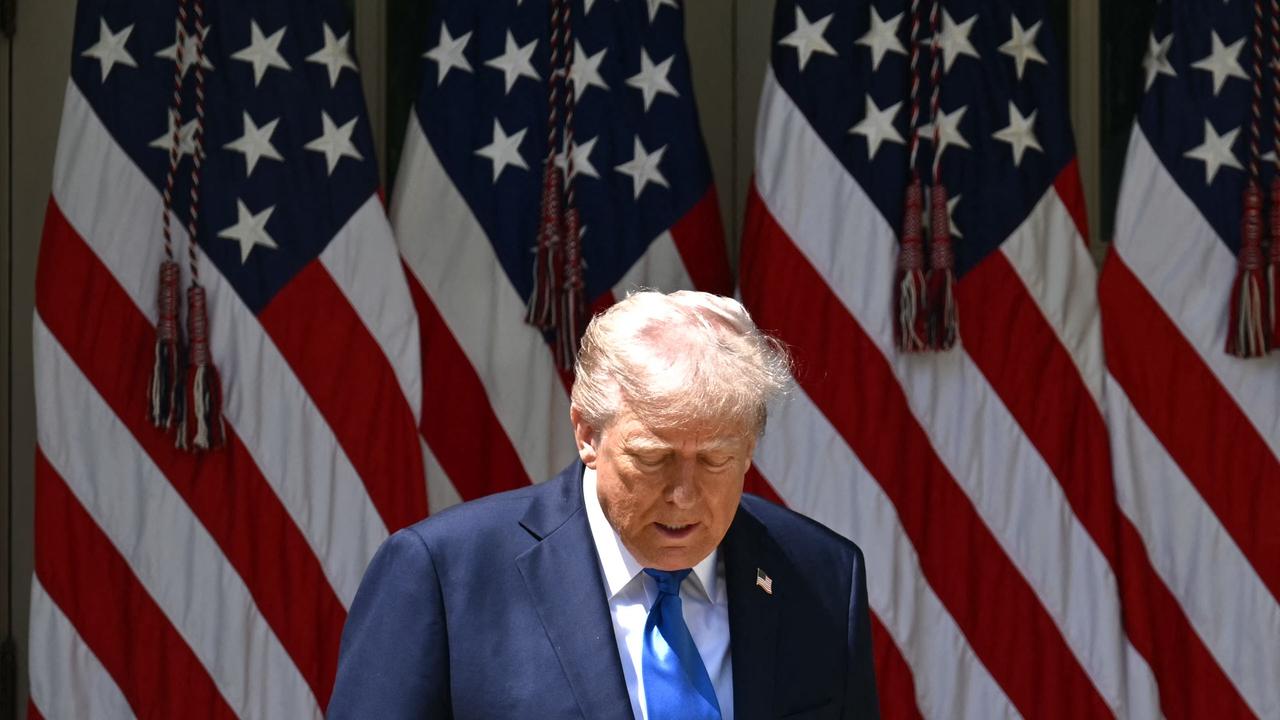A pair of 1880s jeans just sold for $120,000. Their pocket reveals a complicated piece of Levi’s history
A pair of excavated Levi’s jeans from the 1880s just sold for $120,000. Their pocket reveals a complicated piece of America’s anti-Chinese history.

On October 1, in a remote RV park in northern New Mexico, a pair of excavated Levi’s jeans from the 1880s sold at auction for $US76,000 ($AU121,000). The buyer? A 23-year-old from San Diego.
“I’m still kind of bewildered, just surprised in myself for even purchasing them,” said Kyle Haupert, who walked away with the jeans, during an interview a few days after the auction closed.
The bid makes the pair of vintage jeans one of the priciest ever sold. Mr. Haupert, a vintage clothing dealer, put up 90 per cent of the winning bid, while the remaining 10 was kicked in by Zip Stevenson, an elder statesman of the vintage market who has run the Los Angeles shop Denim Doctors since 1994.
Including the buyer’s premium, the pair paid $US87,400 ($AU140,000) total for the jeans. The high-value Levi’s are an extraordinarily rare pair of jeans from an era before planes, traffic lights and radios. They were found several years ago by Michael Harris, a self-described denim archaeologist, in an abandoned mineshaft in the American West.

Like a Pollock canvas, the pants legs are speckled in wax from the candles miners employed to light the way. Advanced age is evident in the cloth patch along the beltline, a buckleback adjuster along the seat, suspender buttons and a single back pocket — details that only a pair from that era would have, Mr. Haupert said. He also relied on Mr. Stevenson’s expertise: “He’s seen everything under the sun. I trust him to confirm that they are an authentic pair from the 1880s.” On the interior, the pants bear the phrase “The only kind made by white labor” printed on a pocket. According to a Levi’s spokesperson, the company used the slogan following 1882’s Chinese Exclusion Act, which barred Chinese labourers from entering the U.S. during a time of rampant anti-Chinese discrimination.
Levi’s subsequently adopted its own anti-Chinese labour policy, reflected in the “made by white labor” tagline on its products and in advertisements. In the 1890s, Levi’s scrapped its policy and dropped the slogan, the spokesman said. (The act was repealed in 1943 and condemned by Congress in 2011-2012.) Levi’s today is “wholly committed to using our platform and our voice to advocate for real equality and to fight against racism in all its forms, ” the company representative said For denim scholars, that phrase, which was only used for a short period, dates the jeans to the pre-1900s. “It’s wild to see that,” said Mr. Haupert. “That’s how old these jeans are.” Mr. Haupert struck the deal with Mr. Stevenson as the bidding war intensified. “I’m kind of investing in Zip,” said the younger vintage-flipper, figuring that Mr. Stevenson, who has a deep Rolodex of denim-collecting clients, could help find a potential buyer for the jeans down the line.
Critically, the jeans are almost entirely intact after all these years. “You could wear them to get a Starbucks,” said Mr. Stevenson. They were sold at auction by Brit Eaton, a vintage expert who has been selling collectable jeans since the 1990s and claimed in an interview to have “arguably the best collection of early denim in the world, outside the Levi’s museum.” He said he purchased these jeans from Mr. Harris about five years ago for $23,000.
The auction of the jeans was the marquee event of the Durango Vintage Festivus, a four-day vintage clothing market put on by Mr. Eaton in the New Mexican plains. “I knew they’d be a big draw,” said Mr. Eaton of the jeans. Indeed they were — and continue to be. Videos of the bidding have been viewed hundreds of thousands of times online.
The event was originally a way for Mr. Eaton to raise funds to build a 12,000-square-foot warehouse for housing his extensive collection of antique clothes, but it blossomed, with sellers from across the country arriving to hawk esoteric jeans and jackets.
Sotheby’s this was not. Clothes were sold in heaps under pavilion tents at the sprawling Tico Time River Resort. During the auction, bidders sat around in plastic chairs while onlookers drank from cans of beer.
Mr. Haupert drove down from Southern California with five friends and few expectations for the event. “We thought it was going to be the Fyre Festival of vintage,” he said. It was more organised than that failed music festival, and Mr. Haupert and his peers spent the weekend buying and flipping with other dealers.
While he wasn’t originally set on purchasing the 1880s Levi’s, Mr. Haupert came to see them as a sound investment based on their rarity. Buying the jeans was also a way to boost his profile in the vintage world. Since the auction, he’s gained thousands of followers on Instagram.
He and Mr. Stevenson said that compared with other commodities like a Rolex or an expensive car, these jeans are far rarer. “If you want an expensive Ferrari, you can call five people and get that car,” said Mr. Haupert. “With these pants you’re not going to find them anywhere.” Indeed, Levi’s of this age rarely come up at auction. In 2018, a pair from 1893 sold for nearly $100,000 through a private sale to a buyer in Asia.
Despite his young age, Mr. Haupert said he has been selling aged clothing for six years, specialising in what’s known as “true vintage,” loosely defined as garments that date to at least roughly the 1970s. During the pandemic, he and his friends began sifting through old homes in the desert to find faded — and often highly profitable — decades-old chore jackets and jeans.
“We’ve pulled jeans out of trunks in an attic,” said Mr. Haupert, “We found jeans in the dirt that we sold for $2,000.” As to how he made enough money to plop down the price of a luxury sedan on some jeans, Mr. Haupert said his tactic has always been to sell everything he comes across: “I try to move as much volume as I can.” In recent years, the market for true vintage has ballooned, particularly among young people who seek out items far rarer than the T-shirts or not-too-old sweaters found at local thrift stores.
“There was a period where more hyped types like rap T-shirts were getting really popular and mainstream, and now it seems like this space is kind of shifting more towards true vintage,” said Dylan Gins, the head of social-media marketing at Bidstitch, an online vintage marketplace. Mr. Gins and several of his colleagues flew out New Mexico for the event and broadcast the auction on Ezze, a live-stream app, with thousands of people tuning in.
The jeans are now housed at Mr. Stevenson’s Los Angeles office. The duo has received several inquiries about them, but no firm offers yet. They believe the jeans could be worth as much as $150,000, but are also open to working with a museum or gallery to display them.
“You really have to see them in person to see how insane these are,” said Mr. Haupert. “We’re not in any rush to sell.”
The Wall Street Journal



To join the conversation, please log in. Don't have an account? Register
Join the conversation, you are commenting as Logout